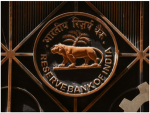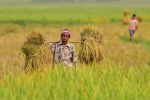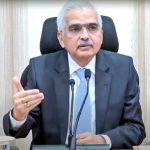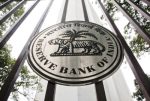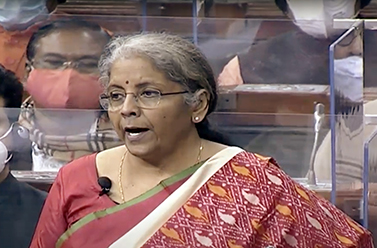
A growth supportive budget. That is how the budget for 2022-23 has been hailed by a section of the experts. However, what stares out from this budget is a continuation of a rather dangerous trend of the previous budgets: Ignoring the demand factor.
Narendra Modi government believes if the upper echelon prospers, the benefits will trickle down to the lower segments of the population. Living with the fact that the private sector is not feeling enthusiastic to invest more, this time, however, the government has decided to piggyback the public sector.
Is this an attempt to put some money in common man’s pocket indirectly while not bowing before the pressure of direct support to the people in normal time? It will not be out of place here to remember our Prime Minister had openly said he was against continuation of MGNREGA, one of the biggest factors behind reduction of poverty in this country over last one-and-a-half decade.
This year also the government has neither given further tax rebates to provide some relief to the middle class that not only bear, proportionately, the maximum burden of tax payment, but also may boost demand, nor has it cared for any measure to provide social security to the vulnerable section in the form of cash transfer to meet their daily expenses.
It has been evidenced in India and elsewhere that an increase of money in the hands of the poor and the lower middle class creates more demand, while the same with the upper classes goes to savings and creation of assets. That is why the income inequality over many decades, and particularly since the liberalisation that began in 1991, has created huge gap in accumulation of wealth among the Indians. It calls for urgent measures to address the issue, but the budget has largely ignored it.
Instead, the budget has depended on public spending to boost the economy. The substantial increase in capital expenditure from Rs 5.45 trillion to Rs 7.5 trillion speaks of the government’s desire to curtail distribution of freebies like the last two Covid-years, and focus on productive spending. Perhaps the underlying assumption is that the worst part of Covid-19 that forced lockdowns and caused disruptions is over.
Interestingly, the experts have noted that half of this increase has been earmarked for interest-free loans to state governments for capital expenditure, Of course there is also a 10 per cent increase in the allocation for defence, which has been necessitated due to aggressiveness of China, one of the two of our neighbours that have no concern for democratic values and means, either within the country or in international affairs. Some increase is also noticed also for the nal se jal scheme and for roads and railways..
It must be noted that a major part of the regular developmental works are carries by the state governments, be that local systems of power, urban infrastructure or civic amenities, or broader issues of education or health. How important is health has been proven in last two years. . Again, the states can play a major role in poverty reduction. In that perspective, interest-free loans to state governments for capital expenditure is welcome. It may help create some jobs too.
For this, the union budget has allowed the states deficits up to 3.5 per cent of GDP and has promised them more money if they go for capital expenditure. This fiscal space can be useful if the states utilise it fairly, but our experiences of daily life force us to put a question mark at this point. Additionally, it has been pointed out by the experts that the total spending of the states during the pandemic is substantially lower than budgeted.
The budget has also shown sensitiveness towards climate change, but perhaps its actions are not being integrated.
According to a report by the Overseas Development Institute, due to climate change India may lose between 3 to 10 percent of its GDP annually by 2100, and more importantly, its poverty rate may rise by 3.5 percent by 2040. The maximum brunt of this will be borne by the poorer, and thereby more vulnerable, sections of the population. To fight with this impending danger, what is needed is to empower and educate the vulnerable section to create resilience at local levels. The budget has not shown much awareness about it.
In fact, it brings us back to the issue of increasing income and wealth inequality. It may not harm us now, for the weaker segment of population has little means to raise their voice. But in the long term, it will be detrimental for the nation as a whole. Unfortunately, the budget has ignored it all together, and it is evident from lack of efforts to transfer money to the vulnerable segment of our population. – India News Stream






